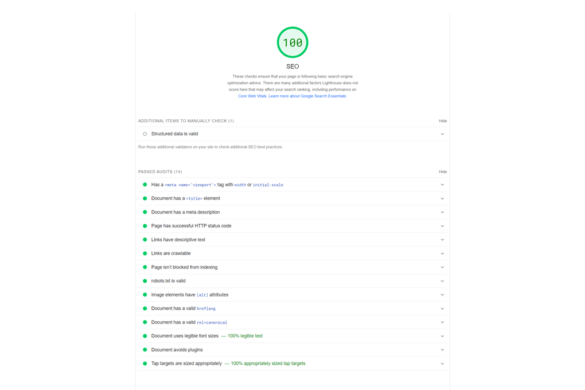Table of Contents
Crush the SERPs: SEO Best Practices
Search Engine Optimization (SEO) is a critical aspect of digital marketing. It involves optimizing a website to rank high in search engine results pages (SERPs) for specific keywords and phrases. As search engines become more sophisticated, SEO best practices continue to evolve. In this article, we will explore ten essential SEO best practices that can help you improve your website’s visibility and crush the SERPs.
The first best practice is to conduct thorough keyword research. Keyword research involves identifying the words and phrases that your target audience uses to search for your products or services. By optimizing your website for these keywords, you can increase your chances of ranking high in search engine results pages.
The second best practice is to optimize your website’s content. Your website’s content should be relevant, informative, and engaging. It should also be optimized for your target keywords and phrases. By creating high-quality content that is optimized for your target audience, you can improve your website’s visibility and attract more traffic.
Understanding SEO Fundamentals
What is SEO?
Search Engine Optimization (SEO) is the process of optimizing a website to improve its visibility and ranking on search engine results pages (SERPs). The ultimate goal of SEO is to increase organic traffic to a website by improving its relevance and authority in the eyes of search engines.
SEO involves a range of techniques and strategies, including keyword research, on-page optimization, link building, and content creation. By implementing these techniques, website owners can improve their website’s ranking on SERPs for relevant search queries.
How Search Engines Work
Search engines use complex algorithms to determine the relevance and authority of web pages for specific search queries. These algorithms take into account a range of factors, including keyword usage, content quality, website structure, and backlink profiles.
When a user enters a search query into a search engine, the engine uses its algorithm to identify the most relevant web pages for that query. The search engine then displays these pages on the SERP in order of relevance and authority.
To improve their ranking on SERPs, website owners need to understand how search engines work and what factors they consider when ranking web pages. By optimizing their website for these factors, website owners can improve their visibility and ranking on SERPs, ultimately driving more organic traffic to their site.
Keyword Research and Optimization
Identifying Target Keywords
Keyword research is one of the most critical aspects of SEO. It involves identifying the most relevant and high-traffic keywords for your website. The goal is to find keywords that have a high search volume and low competition.
There are several tools available to help with keyword research, including Google AdWords Keyword Planner, SEMrush, and Ahrefs. These tools can help you identify the most relevant keywords for your business and give you an idea of how difficult it will be to rank for those keywords.
Once you have identified your target keywords, it’s essential to optimize your website for those keywords. This involves ensuring that your website’s content is relevant to the keywords you are targeting and that the keywords are used in the right places.
Keyword Placement Strategies
Keyword placement is crucial for SEO. Here are some best practices for keyword placement:
- Include your target keywords in your page title, meta description, and URL.
- Use your target keywords in the first paragraph of your content.
- Use your target keywords throughout your content, but don’t overdo it. The ideal keyword density is between 1-3%.
- Use variations of your target keywords throughout your content to avoid keyword stuffing.
- Use header tags (H1, H2, H3) to highlight your target keywords.
By following these best practices, you can optimize your website for your target keywords and improve your chances of ranking higher in the search engine results pages (SERPs).
Content Creation for SEO
Creating high-quality content is one of the most important factors for ranking well in search engines. Here are some best practices to keep in mind when creating content for SEO.
High-Quality Content Principles
High-quality content is essential for SEO success. Here are some principles to follow when creating content:
- Relevance: Make sure your content is relevant to your target audience and addresses their needs and interests.
- Uniqueness: Create original content that provides value to your readers and stands out from the competition.
- Accuracy: Ensure that your content is factually correct and free of errors.
- Engaging: Write in a style that is engaging and easy to read, with a clear and concise message.
- Value: Provide value to your readers by answering their questions, solving their problems, or providing useful information.
Content Structuring for SEO
Structuring your content properly can help search engines understand what your page is about and improve your chances of ranking well. Here are some tips for structuring your content for SEO:
- Use Headings: Use H1, H2, and H3 headings to organize your content and make it easy to read.
- Include Keywords: Include your target keywords in your headings, subheadings, and throughout your content.
- Use Lists: Use bullet points or numbered lists to break up your content and make it easier to read.
- Add Images: Use images to break up your content and make it more engaging. Be sure to use alt tags to describe your images for accessibility and SEO purposes.
- Link Internally: Link to other relevant pages on your website to help search engines understand the structure of your site and improve your chances of ranking well.
By following these content creation best practices, you can improve your chances of ranking well in search engines and drive more traffic to your website.
On-Page SEO Techniques
On-page SEO techniques are the foundation of any successful SEO campaign. These techniques are the elements that can be optimized on a website to help search engines understand the content and context of the pages. In this section, we will discuss two important on-page SEO techniques: Title Tags and Meta Descriptions, and Header Tags and SEO Copywriting.
Title Tags and Meta Descriptions
Title tags and meta descriptions are two of the most important on-page SEO elements. The title tag is the HTML element that defines the title of a web page, and the meta description is a brief summary of the page content that appears below the title in search engine results pages (SERPs).
To optimize title tags and meta descriptions, it is important to include relevant keywords and phrases that accurately describe the content of the page. It is also important to keep the title tag and meta description length within the recommended character limit to ensure that they are fully displayed in the SERPs.
Header Tags and SEO Copywriting
Header tags (H1, H2, H3, etc.) are HTML elements used to define headings and subheadings on a web page. They help to break up content into sections and make it easier for search engines to understand the structure of the page.
SEO copywriting involves creating high-quality, relevant, and engaging content that incorporates keywords and phrases in a natural way. By optimizing header tags and using SEO copywriting techniques, website owners can improve the readability and relevance of their content for both users and search engines.
In conclusion, on-page SEO techniques are crucial for website owners who want to improve their search engine rankings and drive more traffic to their sites. By optimizing title tags, meta descriptions, header tags, and content, website owners can ensure that their pages are easily understood by search engines and provide value to users.
Technical SEO Essentials
Site Speed Optimization
Site speed is an essential factor in technical SEO. A fast loading website not only improves user experience but also helps in search engine rankings. According to research, a delay of even 1 second in page load time can result in a 7% reduction in conversion rates. Therefore, optimizing website speed is crucial.
One way to optimize site speed is to minimize HTTP requests by reducing the number of files loaded on a page. This can be achieved by optimizing images, using CSS sprites, and minifying CSS and JavaScript files. Another way to improve site speed is to leverage browser caching by setting expiration headers on static resources.
Mobile-Friendliness and Responsive Design
With the increase in mobile usage, having a mobile-friendly website is crucial for SEO. Google has even introduced mobile-first indexing, where they use the mobile version of a website for indexing and ranking purposes. Therefore, having a responsive design that adapts to different screen sizes is essential.
To ensure mobile-friendliness, website owners should use a responsive design that adjusts to different screen sizes and resolutions. Additionally, they should ensure that the website is easy to navigate on a mobile device and that the content is easily readable without zooming in.
In conclusion, optimizing site speed and ensuring mobile-friendliness are two essential technical SEO practices that website owners should implement to improve their search engine rankings.
Building a Strong Backlink Profile
Link Building Strategies
Building a strong backlink profile is essential for SEO success. A backlink is a link from one website to another, and search engines use them to determine the relevance and authority of a website. Here are some effective link building strategies:
- Guest blogging: Writing high-quality guest posts for other websites is an effective way to earn backlinks and increase your online visibility.
- Broken link building: This involves finding broken links on other websites and offering to replace them with your own content.
- Infographics: Creating informative and visually appealing infographics can attract backlinks from other websites.
- Social media: Sharing your content on social media platforms can help increase its visibility and attract backlinks.
Analyzing and Monitoring Backlinks
Analyzing and monitoring your backlinks is crucial to ensure that they are high-quality and relevant. Here are some tips to help you analyze and monitor your backlinks:
- Use a backlink analysis tool: There are several backlink analysis tools available that can help you analyze the quality and relevance of your backlinks.
- Check for low-quality backlinks: Low-quality backlinks can harm your SEO efforts, so it’s important to identify and remove them.
- Monitor your backlinks regularly: Regularly monitoring your backlinks can help you identify any changes or issues that need to be addressed.
By implementing effective link building strategies and regularly analyzing and monitoring your backlinks, you can build a strong backlink profile that can help improve your search engine rankings and drive more traffic to your website.
Leveraging Social Media for SEO
Social media has become an integral part of digital marketing, and its impact on SEO is undeniable. By leveraging social media, businesses can improve their search engine rankings and drive more traffic to their websites. In this section, we will discuss two ways in which social media can be used to boost SEO: Social Signals and Content Sharing and Engagement.
Social Signals and SEO
Social signals refer to the likes, shares, and comments a piece of content receives on social media platforms. Search engines like Google take these signals into account when determining the relevance and authority of a website. The more social signals a website has, the higher its chances of ranking well in search engine results pages (SERPs).
To leverage social signals for SEO, businesses should focus on creating high-quality content that is shareable and engaging. By creating content that resonates with their target audience, businesses can increase the likelihood of their content being shared on social media, which will, in turn, improve their search engine rankings.
Content Sharing and Engagement
Social media platforms provide businesses with an opportunity to share their content with a wider audience. By sharing their content on social media, businesses can drive more traffic to their website, which can improve their search engine rankings.
To maximize the impact of content sharing on SEO, businesses should focus on creating content that is not only shareable but also engaging. Engaging content will encourage users to interact with the content, which can lead to more likes, shares, and comments. This, in turn, will improve the social signals of the website, which will improve its search engine rankings.
In conclusion, social media can be a powerful tool for improving SEO. By leveraging social signals and content sharing and engagement, businesses can improve their search engine rankings and drive more traffic to their websites.







Add your first comment to this post